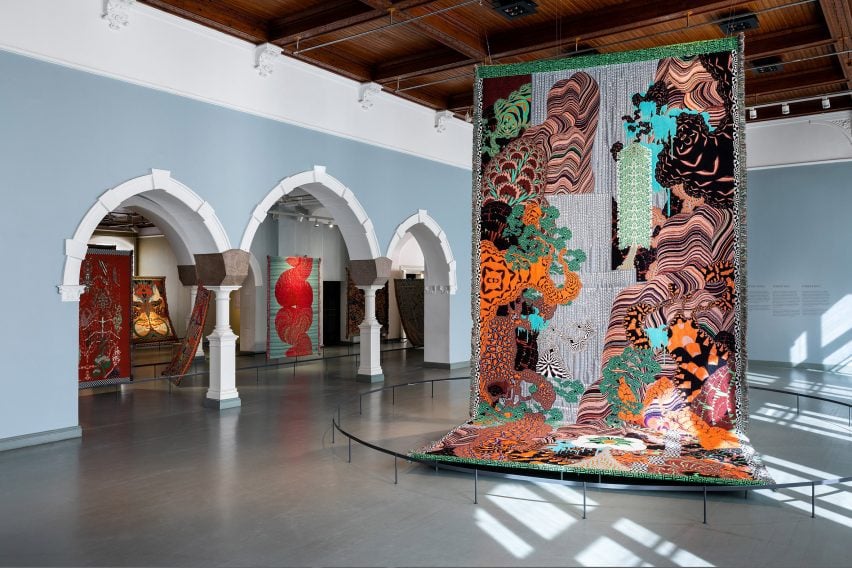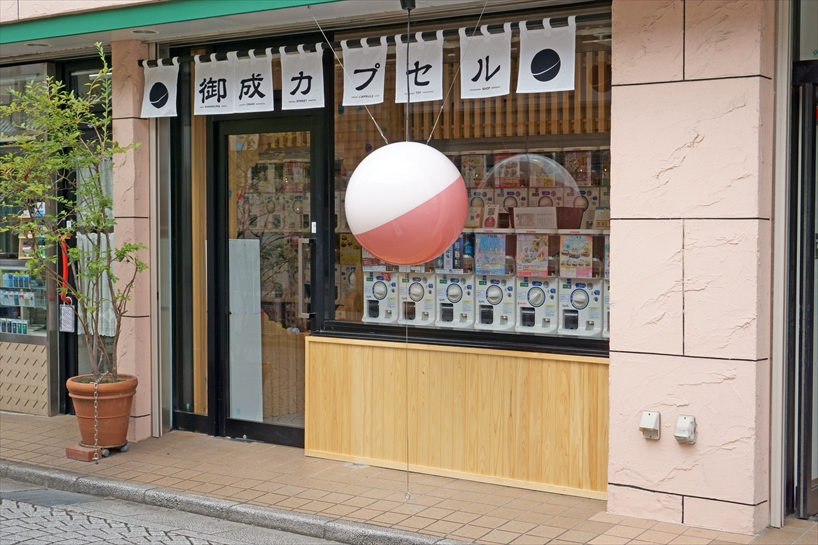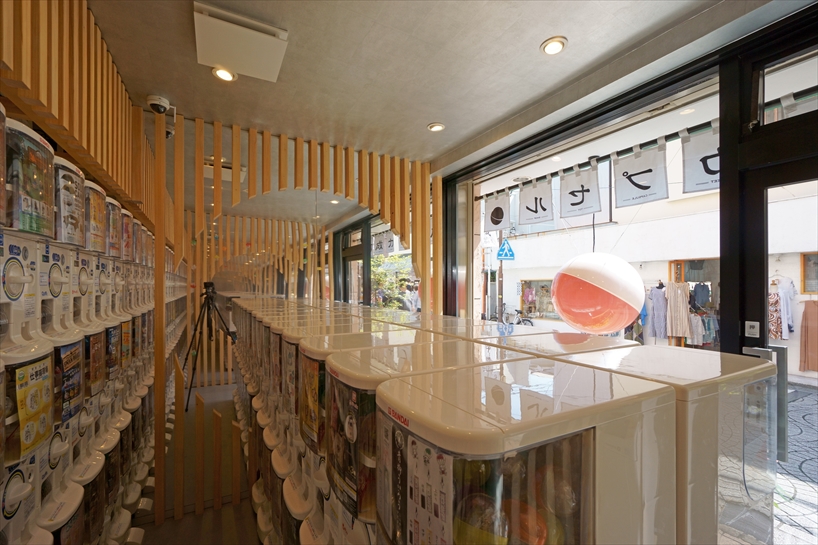Kustaa Saksi creates vivid tapestries to explore “reality and illusion”
Multidisciplinary designer Kustaa Saksi has unveiled In the Borderlands, an exhibition of jacquard textiles at the Helsinki Design Museum, which includes a piece featuring scenery generated by AI software.
Conceived as objects that straddle both art and design, Saksi’s large-scale textiles were hung from the ceilings and arranged across various rooms within a gallery at Helsinki’s Design Museum.
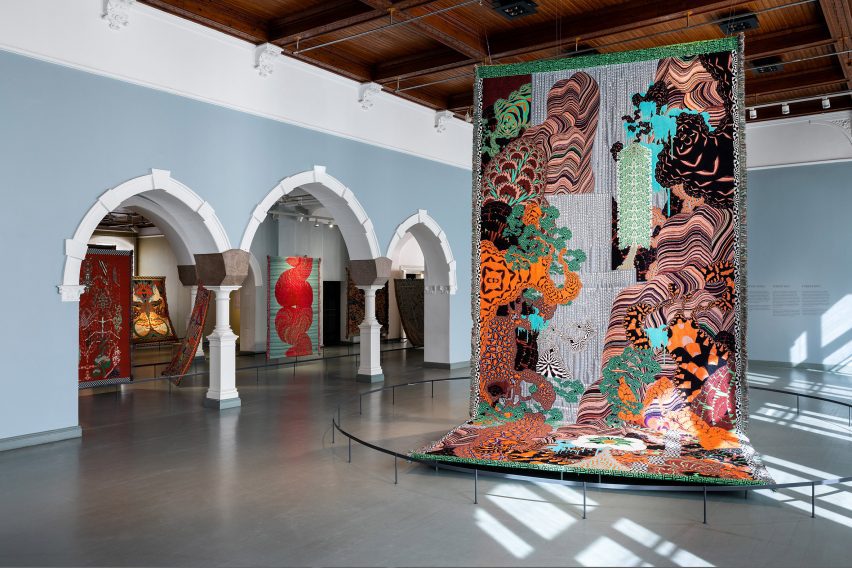
To create his pieces, the designer uses jacquard weaving – a technique invented in 1804 where patterns are woven with yarn using a loom to create a textile, rather than printed, embroidered or stamped onto fabric.
Ideal Fall is a single oversized tapestry featuring bright and abstract forms depicting waterfall- and plant-style forms.
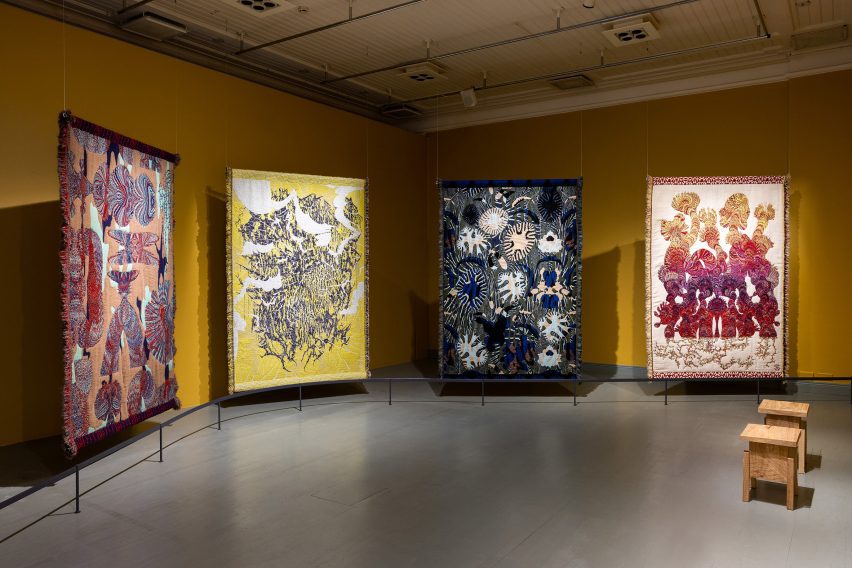
Saksi created the colourful textile using AI software, which he instructed to generate images that would depict “ideal” scenes of nature. The designer then picked his favourite suggestions and used the imagery as a stimulus for the tapestry’s patterns.
“The exhibition explores moments between reality and illusion, which are the starting point for many of Saksi’s works,” said the Design Museum.
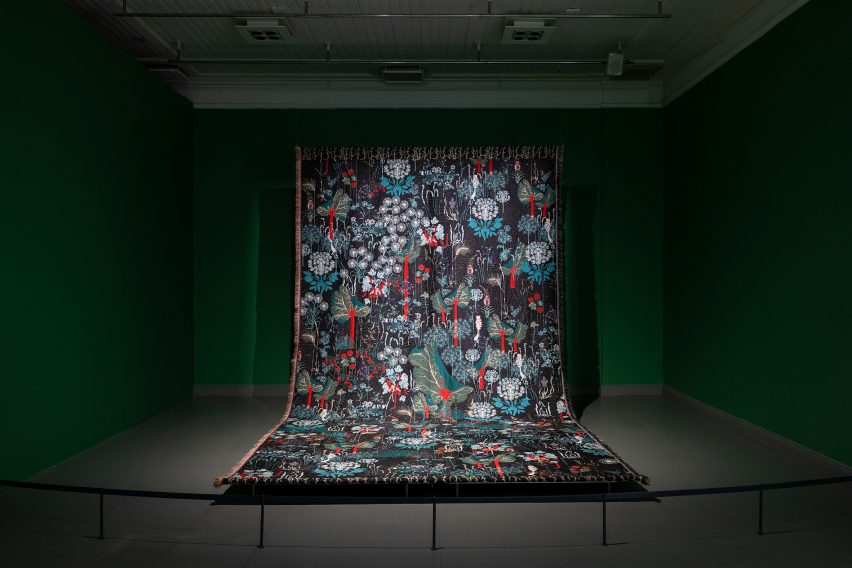
Migraine Metamorphoses is another series of textiles featuring similarly bold designs, which Saksi created to refer to the various phases of migraines – intense headaches that the designer has suffered since the age of seven.
According to the museum, the soft texture of the textiles intends to “mitigate the painful subject matter”.
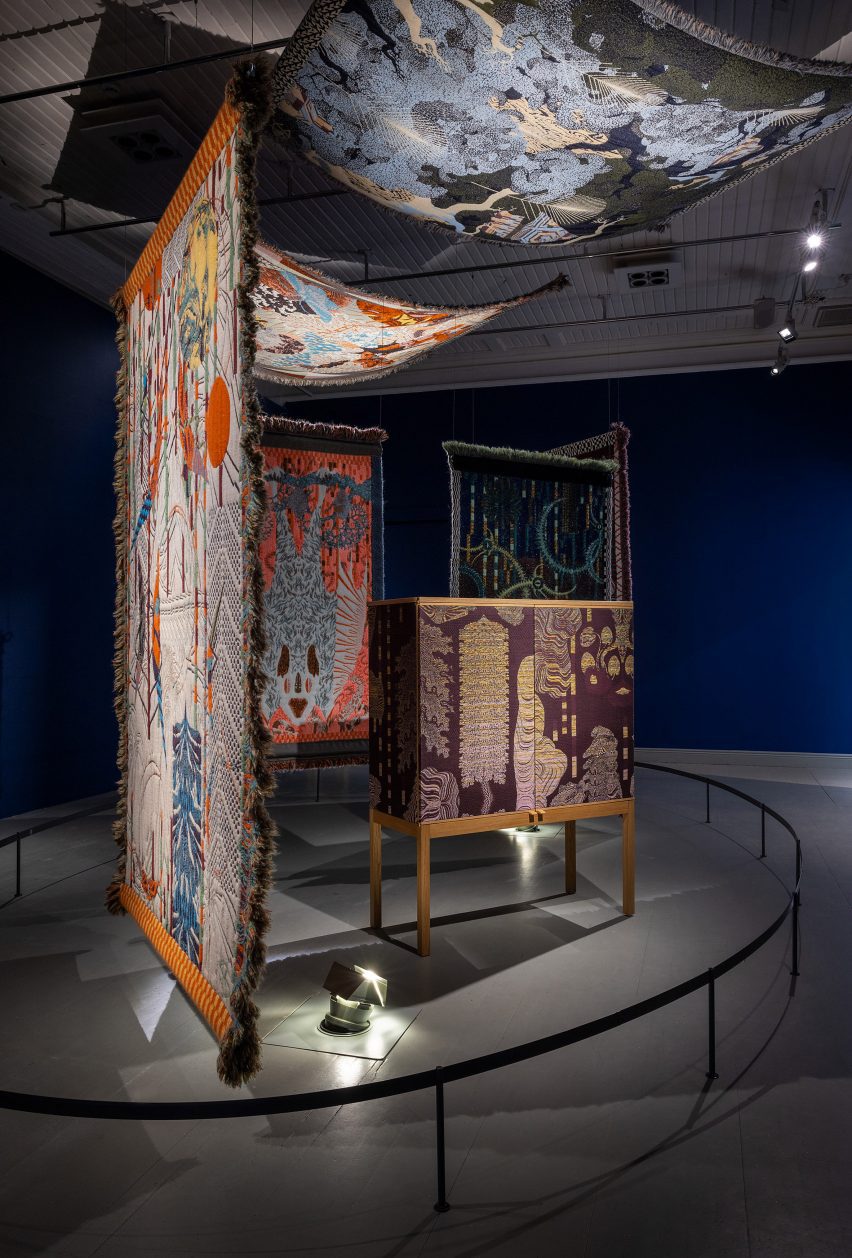
Often influenced by the boundaries between dreams and imagination, Saksi’s first-ever tapestry series was also on show at the Design Museum.
Called Monsters and Dreams, it is characterised by striking patterns that take cues from hallucinations experienced by one of the designer’s family members. These textiles were draped across or hung from the ceiling of a single room with dark blue walls, which had been painted to enhance the pieces’ dramatic theme.
Saksi has created his pieces in collaboration with Dutch studio TextileLab since 2013.
“The jacquard technique can be referred to as one of the early precursors to the computer,” said the Design Museum.
“It was the first mechanised technique which enabled the transfer of information about a particular pattern to a weaving machine with the help of a punched cylinder, to eventually become a piece of textile.”
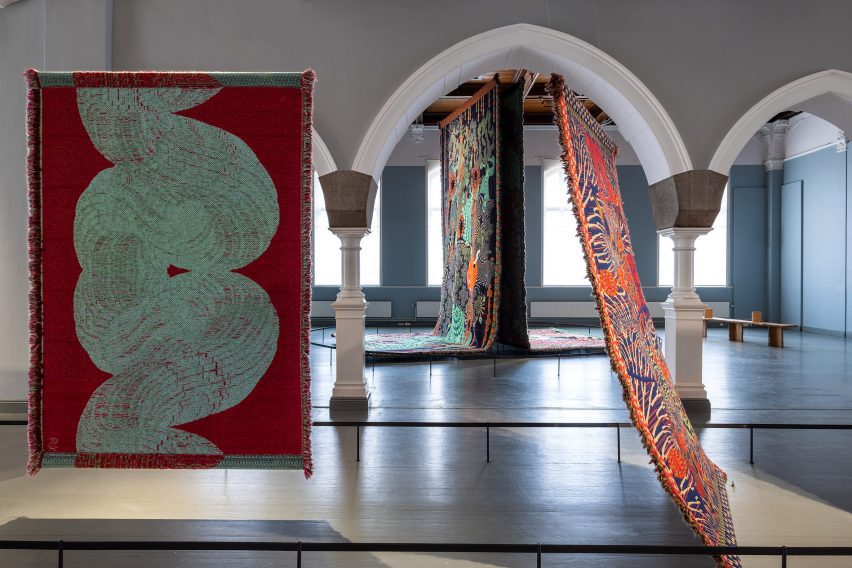
Throughout the gallery, the textiles were illuminated with controlled levels of lighting in order to preserve their appearance, according to the museum.
In the Borderlands is on display until 15 October as part of the museum’s 150th-anniversary programme. Elsewhere at Helsinki Design Week, designer Didi NG Wing Yin presented a series of amorphous timber furniture while last year’s edition of the event featured projects including plant-based textiles.
The photography is by Paavo Lehtonen.
Helsinki Design Week takes place from 8 to 17 September 2023 in Helsinki, Finland. See Dezeen Events Guide for an up-to-date list of architecture and design events taking place around the world.

